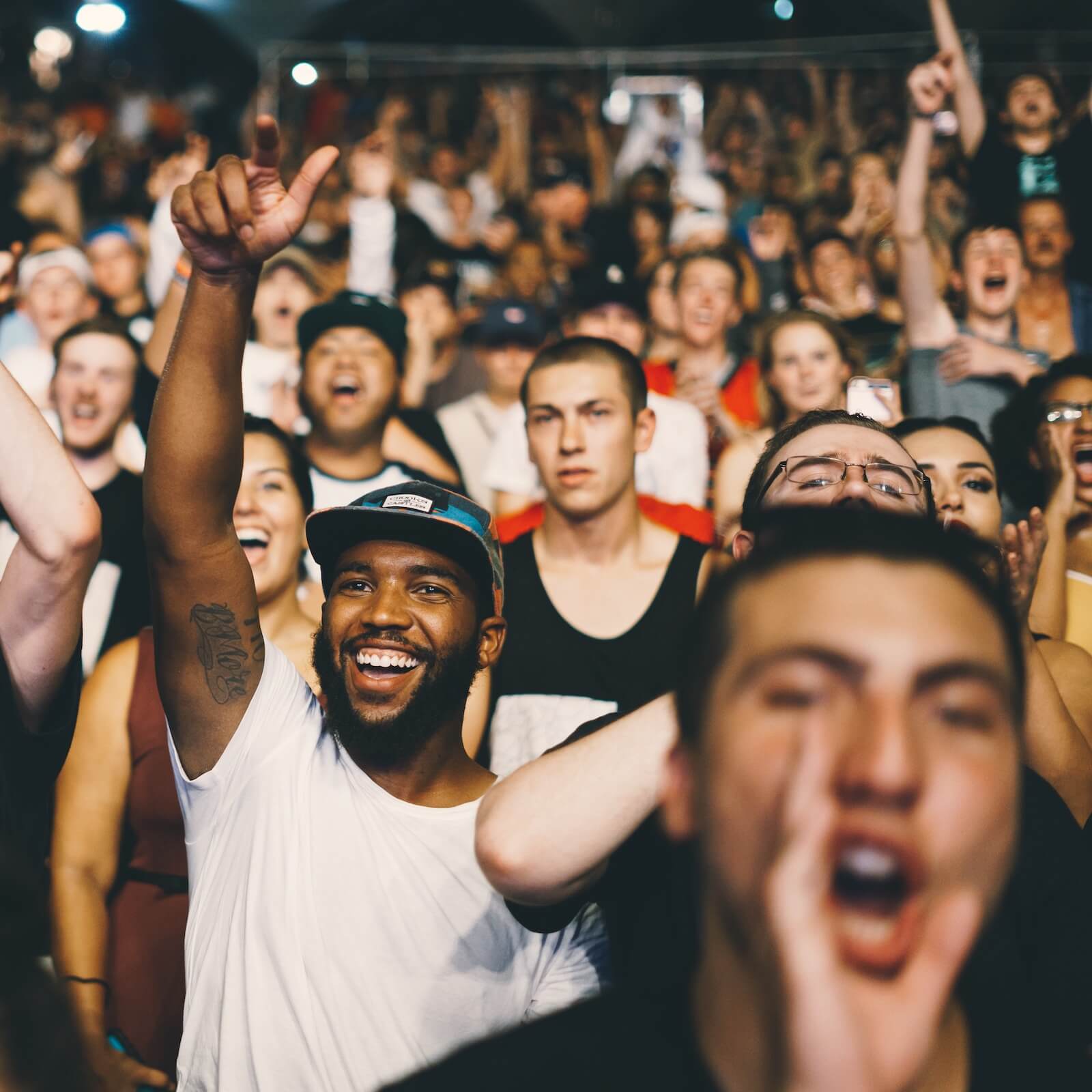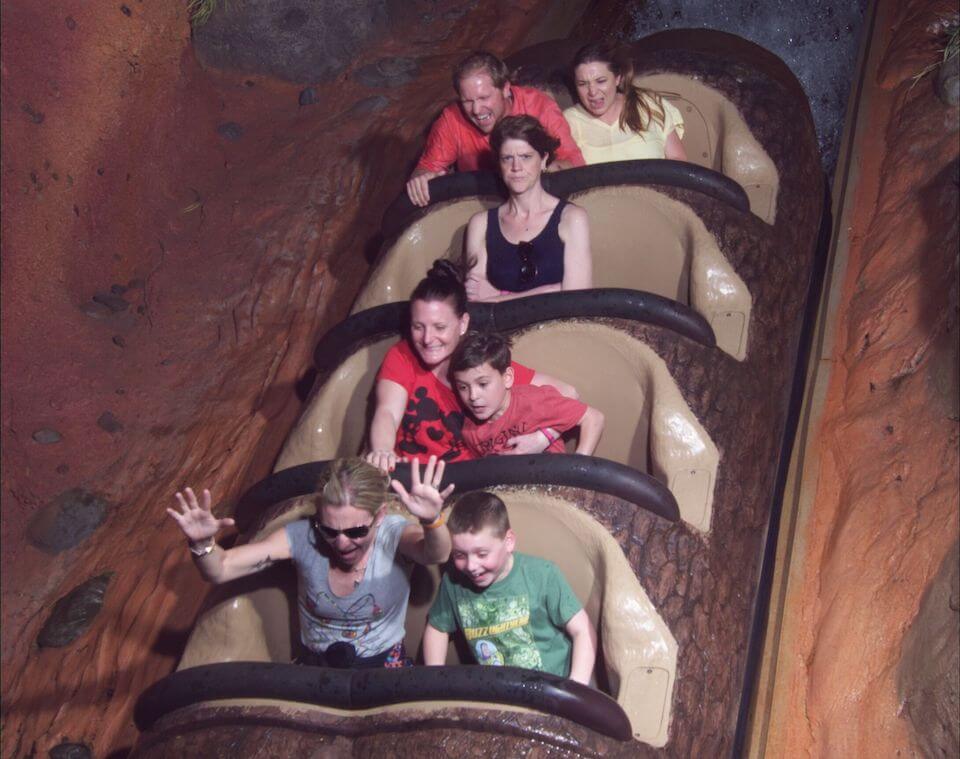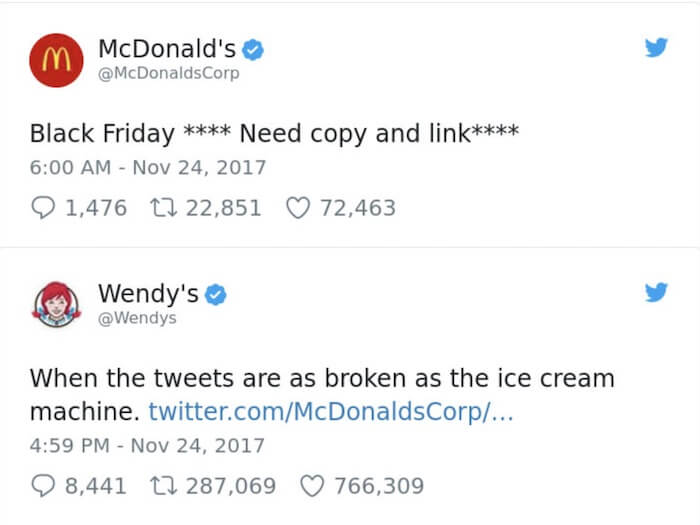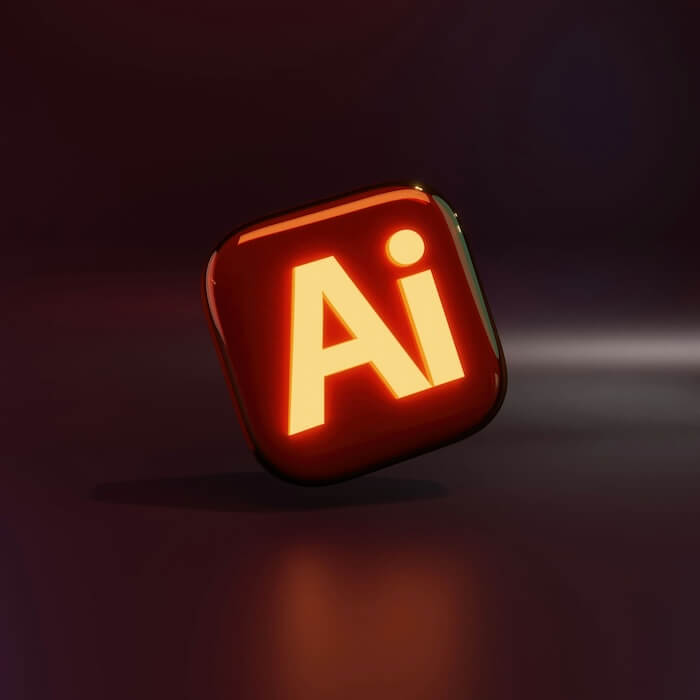
8 Ways to Create Viral Content that Gets Shared Like Crazy
Dec 27, 2019|Read time: 12 min.
Key Points
- Content of all kinds goes viral, so it can be difficult to pin down exactly what causes virality.
- Some content goes viral because it was in the right place at the right time.
- Viral content often helps people, evokes a strong emotion, or sparks a conversation.
- You can increase your chances of going viral even more with smart, scalable promotion strategies.
Viral content is a magical phenomenon. For a brief instant, your family, friends, coworkers and complete strangers are all connected by a singular event.
“You have to see this,” your coworker writes, pasting a link into your team-wide Slack channel. So you click on it. There before you is a compilation of TikTok videos featuring people twirling their cats as “Mr. Sandman” plays in the background. Or a hilarious video of a woman trying kombucha for the first time. Maybe it’s just a simple photo of an angry woman on a Disney ride.

Sometimes it seems nearly impossible to predict what’s going to go viral.
The truth can be frustrating when you’re viral marketing for a major brand. You pour millions of dollars into digital marketing campaigns that are bested by blurry, six-second iPhone videos. But we’ve got good news for you: viral content marketing is easier to produce when you understand the underlying principles of why and how content resonates. So, before you crank up your content production, stop and think about why you want your audience members to see it. Your takeaways just might inspire your company’s next viral video.
The Brand Intelligence Report
Exclusive AI insights, search trends, and brand strategies, delivered to your inbox.
What makes content go viral?
There’s a common misconception that content goes viral because of a universal secret recipe with ephemeral ingredients. In truth, every piece of content that goes viral does so because of a different combination of factors. Failure to acknowledge that can result in attempts to reverse-engineer viral posts that fall flat or backfire catastrophically.
Just ask Pepsi what happened when they thought they had found the formula for viral content. Combine one of the biggest Instagram celebrities ever plus a cause people care about. Then, add in a hip hop beat and flashy visuals. What could go wrong? (Answer: a lot.)
That said, while you’ll be making up your recipe from scratch each time, at least you’ll know the ingredients. Eight of the biggest ingredients are broken down below. We’ll call those our “active ingredients” – the ones that move people to share.
Our inactive ingredients are the ones that add style, texture and flavor. These include: cute animals (the backbone of the entire internet); generational in-jokes; celebrity endorsements; catchphrases like Damn Daniel; social movements and much more. They’re the situational elements that underpin meaningful qualities like humor, emotion or purpose.
Viral content is about impact
This is called “cultural cartography,” according to Dao Nguyen, Publisher at BuzzFeed. When BuzzFeed, master of virality, creates content, they don’t focus on the subject matter or format (a cat video, list posts, a quiz, etc.). Instead, they focus on what the content does for the reader:
- Are you making people laugh?
- Helping them do a job?
- Inspiring them?
- Trying to educate them?
- Helping them discover or reinforce or share their identity?
- Restoring their faith in humanity?
“People are connected to each other on Facebook, on Twitter, and they’re increasingly using media to have a conversation and to talk to each other,” Dao says in her Ted Talk. “If we can be a part of establishing a deeper connection between two people, then we will have done a real job for these people.”
Want know how to make your content go viral? We’ll boil down the recipe in the next section. Every single one of these eight ingredients we’ll cover is about one thing: getting people to connect with each other and have a conversation. This mentality is what’s allowed BuzzFeed to garner a global audience of over 650 million.
Content Strategy Playbook
The Fortune 500 CMO’s guide to content strategy.
How to make viral content
There are so many benefits to content marketing, it’s easy to see why marketers are fixated on virality. Unfortunately, there isn’t a surefire step-by-step guide for how to make content go viral. However, you can amplify your chances of success if you follow these 8 simple rules. We’ll also walk through some of the best viral content examples from top brands to help you amplify your content strategy!
1. Emotional content
Budweiser’s Someone Waits for You at Home is an anti-drunk driving ad. It features a loyal yellow lab waiting for his owner to get home safely. The touching relationship depicted is one that both dog owners and pet-free softies can instantly connect to. This simple but powerful ad amassed 13 million views within weeks of its release. People didn’t just share it, either. They took to social media to talk about how the ad had impacted them. Mashable wrote that the ad “will not only convince you to never drink and drive, but will also leave you clutching your pet as you weep.”
When online content makes us feel something, we want to share it so we can bond over those feelings with others. Animals – and dogs in particular – are often a conduit for this because of their unflinching, uncomplicated goodness. But they’re not the only way to elicit strong emotions.
And an emotional response doesn’t always mean tears, either. Just take Gillette’s The Best a Man Can Get campaign. It opts for a message-driven montage that asks the audience to redefine masculinity. While the campaign’s pinnacle ad may not have elicited tears, it did elicit a range of strong emotions. Not all of those emotions were positive ones; Gillette received plenty of backlash from people who didn’t appreciate the ad. But they took a calculated risk and shared a timely message that deeply resonated with many.
Whether you choose to tell a story or respond to a moment with your own message, make sure it’s so authentic to your brand that you’re willing to stand behind it even if people disagree.
2. Useful content
If hilarious videos, saccharine stories or polarizing messages aren’t a good fit for your brand, not to worry. Emotional content isn’t the only kind that can go viral. If content is useful, that “aha!” moment can stand in for being moved to laughter or tears. Posts about life hacks are often viral-friendly if they actually provide information that will change how people behave. When something helps the reader, they’ll want to share it.
Take CoSchedule’s post “The Know It All Guide To Color Psychology In Marketing + The Best Hex Chart.” Users find it so useful and visually compelling that they’ve shared it more than 21,000 times! Even better, nearly 900 websites linked to the content which reinforces crucial trust and authority signals that improve search rankings.
Why does CoSchedule’s post outperform similar articles about color psychology? Because it goes far beyond just discussing primary colors. It dives into every topic you can imagine about color theory, including color combinations, accessibility, and even how to choose a palette.

Useful content can also be a tool, infographic or original research. Those types of content tend to go “industry viral” rather than universally viral. That’s because universally useful content is hard to pull off when you need to consider brand fit. But industry-wide recognition can be just as powerful for authority and brand awareness as general recognition.
3. “Feel good” content
Like Gillette’s campaign, the Like a Girl campaign from Always asks the audience to rethink gender stereotypes. However, unlike Gillette’s campaign, Like a Girl isn’t especially polarizing. It aims to uplift and encourage rather than critique and deconstruct. The message of female empowerment at a highly influential point in a girl’s life is one its audience will happily accept. The result is an ad that inspires.
The ad was so contagious that the entire series of related YouTube videos has amassed more than 100 million views. The campaign has inspired similarly named conferences, road races and movies. (That’s when you know your content has REALLY gone viral!)
“Feel good” content takes many forms, from political to story-driven. You’ll often notice more feel-good content around the holidays as brands celebrate friends and family coming together or invoke a magical feeling of nostalgia. Banks and other brands that don’t have a kooky or statement-making identity can use feel-good content to wonderful effect.
In fact, it’s often a good idea to try “feel good” content first. There are plenty of reasons for this: it doesn’t force the brand to pull off something that doesn’t fit the brand, like humor or social justice. It does let the brand’s inherent values shine through. And best of all, brands can get “feel-good” viral content ideas directly from their own customers.
Telling customer stories or surprising worthy customers with gifts or assistance is a look that every brand can pull off.
4. Stories
Every brand has a story, so they’re an excellent jumping-off point for viral content creation. Some of your stories are with your own customers. Sometimes the best stories are the ones that you make happen. For example, Cricket Wireless enlisted John Cena’s help to “prank” some of his fans by surprising them as they auditioned to be ambassadors at his new store. The results were simple, effective and entertaining… and garnered over 24 million views.
Stories literally change the brain’s chemistry. Cognitive psychologist Jerome Bruner discovered we are 22X more likely to remember information when it’s wrapped in a story. Why? Because stories trigger emotions, which help us focus and understand concepts more quickly.
5. Surprising content
The element of surprise is the secret ingredient that makes many jokes funny. But it doesn’t just help humorous content. Interesting and surprising information can take many forms. Sometimes it can be literal, like when Payless created a luxury store called Paylessi and invited fashion influencers to shop there. As the style gurus raved about shoes they thought were $600, Payless enjoyed the moment before revealing that every shoe in the shop cost $20-40. Adweek’s article on the stunt got nearly 300K shares.
Google Android uses the element of surprise on unlikely (and adorable!) animal pairings with its viral series Unlikely Animal Friends. The content marketing campaign lets Google play on our inherent interest in the surprising and unusual, while wrapping it in a format almost everybody loves: cute animal videos.
6. Interactive content
As soon as the New York Times released their dialect quiz, a visual exploration of different regional dialects, everybody had to take the quiz and share the results. Content types that involve the audience directly are primed to go viral, especially if users can share something about themselves.
That doesn’t always mean it will go viral, of course. There are some other ingredients in the New York Times quiz that pushed it into viral stardom while similar quizzes remained stagnant. The graphics add a compelling layer and make this not just a quiz but a learning tool. The quiz is supported by a wealth of background research and questions that are based off a Harvard dialect survey. The legitimacy of the research and process adds weight to the quiz; the results mean something.
And the timing was perfect because there wasn’t a better quiz about regional dialect out there at the time. The New York Times effectively started a trend that Buzzfeed was able to capitalize on with their own viral quizzes.
7. Visual content
Content that includes compelling visuals gives people something tangible to connect to. One research study shows visuals are so important that readers remember 65% of the information they read when it includes visuals.
Without visual content? We remember only 10%.
The videos, color psychology blog post and New York Times quiz we discussed earlier are effective partly because of the visual formats. A story about a prank or surprise where you can’t actually watch the reactions simply wouldn’t work. No matter the content format, add visuals, graphics, and data visualizations to tell your story. You just might get 650% more engagement and 3X the shares.
8. Funny content
Finally, we get to the holy grail of viral content: humor. This is perhaps the most difficult form of viral content for brands to pull off because it relies on everything lining up all at once. And the brand has to be fearless enough to go for it.
What compounds the issue is that funny content is often as raw and lo-fi as it gets, like Kombucha Girl, not highly-produced. People find humor in situations that spring up organically, putting brands in a tough bind when they need to keep their image professional and polished.
But it can be done. Many brands are able to use social media as the platform that lets them have those spontaneous, organic moments. Nobody is better at this than Wendy’s, one of the first brands with the boldness to use social media platforms as a regular person would. Their quips, absurdity and banter set the stage for other brands to follow suit. And they continue to push the envelope today. Reply to Wendy’s on Twitter these days, and you’re as likely to get roasted as you are to get thanked.

That kind of content broke all the rules of social media marketing at the time because it strayed from the standard chirpy, pleasant tone we expect from brands. The customer wasn’t always right. Social sharing often included real and unfiltered opinions, and other major brands could be poked at or openly antagonized for sport. Pulling that off took a smart social media team and a lot of trust and buy-in from the higher-ups at Wendy’s.
Funny content takes risks, opens doors and shares something real. And that type of content marketing gets tons of social shares from your target audience.
Right place, right time
Sometimes it takes more than just knowing what makes online content viral. There’s also an element of chance that you simply can’t ignore. Viral content often responds to a cultural moment. And that moment can be so cutting-edge that we may not even recognize it yet. So, viral content is often about being at the right place at the right time. That’s not something you can predict, but you can make your content as viral-ready as possible. Focus your content creation efforts on high-arousal topics that make people want to have a conversation.
No one shares content just to send it into a void. People share content because they expect others to react and to interact with it on social networks – comment on it, like it, tweet or retweet it, etc.
Bottom Line? People share content because they want to have a conversation with others, and they want the social creds that come with being the source.
Viral content promotion and distribution
Last but not least, the best content marketing example in the world can go unnoticed if it’s not shared by the right people in the first place. So, build relationships with publishers, influencers and bloggers. Perform outreach to blogs, media outlets and audiences that will find the content especially moving.
In other words, develop a content distribution strategy that’s scalable and repeatable.
Finally, don’t wait for virality to happen; build the relationships and make it happen. Terakeet has a database (called Chorus) of more than 9 million publishers and influencers. The depth of the database enables us to precision target niche publishers and micro-influencers in just about any vertical. The database also makes the process scalable, further increasing the likelihood of going viral.
And if your content doesn’t go viral? Well, assuming you made it as viral-ready as possible, then the worst case scenario is you end up with great content that reflects positively on your brand. The more great content you produce, the more chances you give yourself to find something that sticks – and the more brand love you’ll build in the process.




